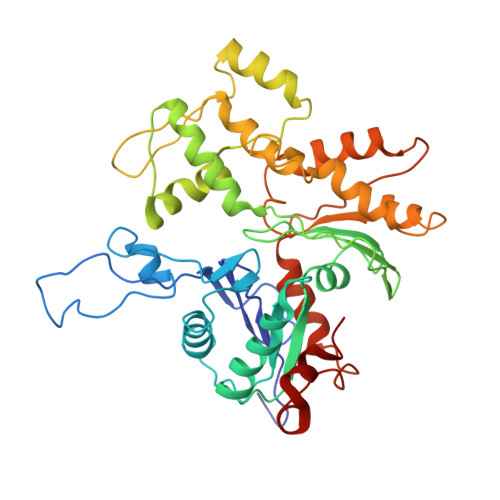Near-atomic resolution for one state of f-actin.
Galkin, V.E., Orlova, A., Vos, M.R., Schroder, G.F., Egelman, E.H.(2015) Structure 23: 173-182
- PubMed: 25533486
- DOI: https://doi.org/10.1016/j.str.2014.11.006
- Primary Citation of Related Structures:
3J8I, 3J8J, 3J8K - PubMed Abstract:
Actin functions as a helical polymer, F-actin, but attempts to build an atomic model for this filament have been hampered by the fact that the filament cannot be crystallized and by structural heterogeneity. We have used a direct electron detector, cryo-electron microscopy, and the forces imposed on actin filaments in thin films to reconstruct one state of the filament at 4.7 Å resolution, which allows for building a reliable pseudo-atomic model of F-actin. We also report a different state of the filament where actin protomers adopt a conformation observed in the crystal structure of the G-actin-profilin complex with an open ATP-binding cleft. Comparison of the two structural states provides insights into ATP-hydrolysis and filament dynamics. The atomic model provides a framework for understanding why every buried residue in actin has been under intense selective pressure.
- Department of Physiological Sciences, Eastern Virginia Medical School, Norfolk, VA 23507, USA. Electronic address: galkinve@evms.edu.
Organizational Affiliation:


















